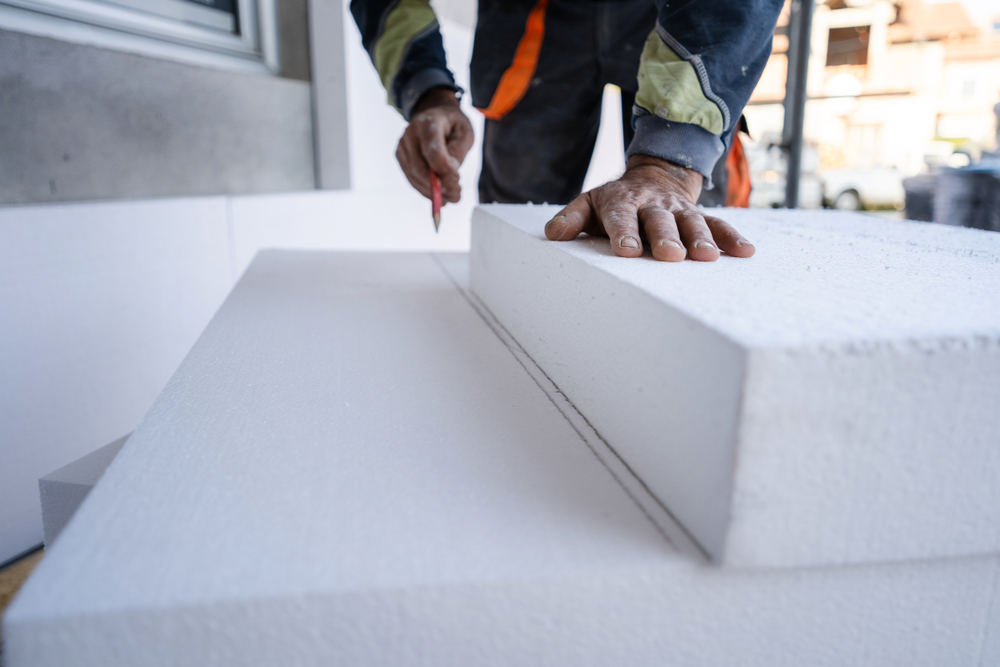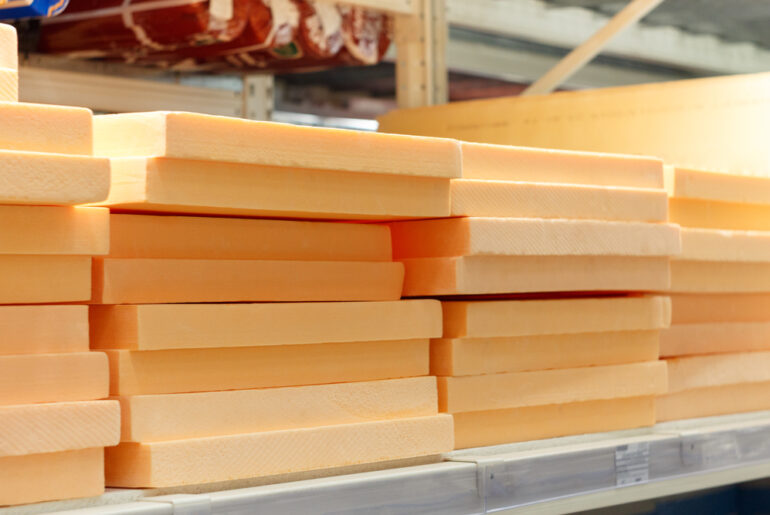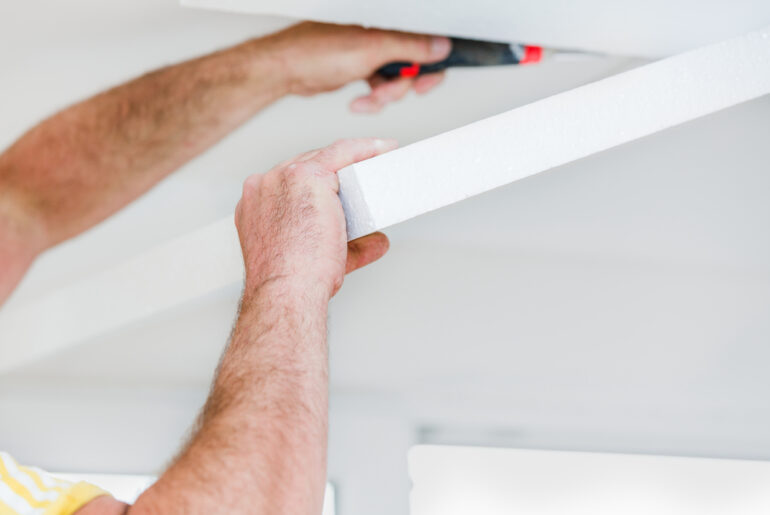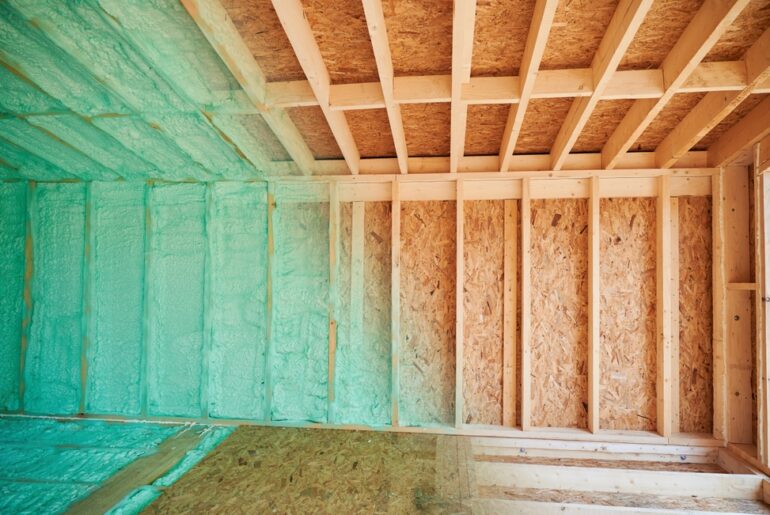Foam board is a terrific insulation material to use as part of a continuous insulating thermal envelope for any building, but it only works well if it is properly sealed.
A big issue with many forms of insulation is the air seal, when heat can transfer around the insulating material because there are small gaps, or the insulation is either not joined or glued together well enough to prevent leaks.
Glue is part of the armoury of anyone who is keen to bring down their energy bills and help maintain a good liveable environment within any renovation or new build.
Here’s our guide on how to glue foam board together and the best glue for the job.
Stick to the Methods
Cartridge Gun Adhesives
When stacking foam board insulation, it is a good idea to ensure that there is no movement between boards, and if you can trap a little air between them then that can have the added benefit of upping the R-value a little bit too.
The way to do it is to run a ¼” bead around the perimeter of the board about four inches in, then bring in beads across the board about 4” apart. This will ensure a good seal along the edges and a good level of grab across the entire foam board.
It is always a good idea to keep a rag close by to wipe up any excess that might spill out once the board has been pressed into position. Use a low-tack tape, or a masking tape to hold the foam board in position until the glue has had time to set; especially pertinent when stacking insulation on walls.
When glueing foam boards on a ceiling it is wise to ensure that you have temporary props available to maintain the foam board’s position while the glue is setting. Some adhesives do have a high grab rate, which means that they hold quickly and securely, but against gravity most glues appreciate a little help.
Brush-on Adhesives
When stacking foam board insulation and you want a good bond between two faces of the same product then brushing on a multi-purpose wood glue is an effective method. Pour the glue into a pot and spread using a brush across the entire surface area of the 1st board. Then cover the surface area of the board that is to be joined.
Most PVA wood glues are low grab until they have partially set, so wait two minutes before bringing the surfaces together, then hold with a low tack or masking tape. Apply pressure with the heels of your hands to ensure good contact across the faces of the boards.
Spray Adhesives
Usually the preserve of crafters, spray adhesives can be used as a helping hand while a solo fitter is mechanically fixing a board, or for speed when putting multiple thin layers, i.e. 1” to 1 ½” foam boards together.
Key Characteristics to Look For
If you are stacking or joining foam boards outdoors, perhaps covering external wall sheathing or working on a roof, then all-weather performance is desirable. There are glues that can be used in damp or humid weather and others that still respond well in high temperatures.
A glue that advertises a rapid grab quotient, which makes it hard to pull apart once two surfaces have come together, is a good thing. Make sure it also has a reasonable repositioning time duration so that a foam board’s position can be adjusted to suit.
VOCs or Volatile Organic Compounds are chemicals that off-gas from a product. Some are solvents and some can be irritating to human respiratory systems, so a glue with high VOCs should only be used in a well ventilated area.
4% is regarded as a low to medium VOC level, whereas anything higher than 8% is considered as having a high VOC content. Care should be taken to ensure a good air flow if using indoors or in confined outdoor spaces.
General Performance Glue
Tite-Bond II Wood Glue
This glue is ideal for stacking foam board insulation face to face using the brush-on method; however, you can also use it to glue two interlocking Styrofoam board edges together. If you run a bead along the groove and push the tongue into it you will have a very strong joint.
PVA is inexpensive and water resistant and will hold polystyrene and Styrofoam together well, but performs less impressively with polyiso.
Dap Dyna Grip Foam Board Construction Adhesive
This brand is particularly popular in the how to blogs and YouTube DIY demonstration channels, which is likely due to the fact that it is right in the middle when it comes to price at $3.25 a tube on average, neither top of the range, nor bargain bin.
It has a rapid grab rate, which means it holds foam board well on first contact, while remaining repositionable for up to fifteen minutes. Anecdotal evidence tells us that on warmer days this grace period will likely be shorter.
It is formulated for polystyrene, Styrofoam and polyiso and works best in dry conditions. For best results use it to bond foam board to foam board as it does not cope well with porous surfaces.
Loctite PL 300
Loctite PL 300 is a water-based latex adhesive and bonds well to porous surfaces, putting it a step ahead of the Dap product, however it is not so good at bonding non-porous surfaces such as polythene or film-faced foam boards.
Like the Dap product it too works best in dry conditions and has similar grab and reset performance, but it is more expensive averaging over $7 per cartridge. It has a low VOC (Volatile Organic Compound) rating so is ideal for use in confined areas such as crawl spaces, knee walls or other areas with low levels of ventilation.
3M High Strength 90
Sticks quickly but gives you ten seconds repositioning time if you don’t get it right straight away. It has an adjustable nozzle so you can customise the coverage area to the work pieces in hand.
Not to be used with polystyrene and should be applied in a well ventilated space.
High Performance Glue
Gorilla Heavy Duty Construction Adhesive
You have to be quick with this glue as it has an incredibly fast grab quotient and will give you just thirty seconds to adjust the foam board into position. It is not prone to shrinking or cracking and Gorilla say that it works well in damp conditions too.
It has a low VOC rating at 2% so you could use this glue with confidence in enclosed areas such as crawl spaces or behind knee walls. The rapid grab capability means it could be ideal when bonding to cast concrete ceilings or foundations. Average sticker price is $12.
Not compatible with polyethylene or polypropylene materials.
Loctite PL Max Premium
When you need something that will hold your foam board insulation quickly and securely to almost any substrate then this adhesive is the comprehensive answer. The data sheet that comes with Loctite PL Max Premium states that this glue is ideal for use when bonding foam to timber, masonry, all metalwork and uPVC.
It has a moderate VOC rating, so is not ideal for use in unventilated areas and it comes at a premium average sticker price of $12.50. Like the Gorilla brand it’s also not recommended for glueing polythene faced foam boards or when the mercury in the thermometer climbs past 90°F.
Wet Weather Gear
Leech F-13 Construction Adhesive
If your foam insulation board is likely to face plenty of water ingress, let’s say you are glueing insulation to the external foundations of a new build structure, then this is probably the top adhesive to have in your kit.
It is resistant to humid conditions so performs well in crawl spaces in southern states and is also good with below average temperatures, comfortable with snow if you are in northern states. Be aware that it does give off flammable vapors while being applied so ensure good cross ventilation (and no smoking).





